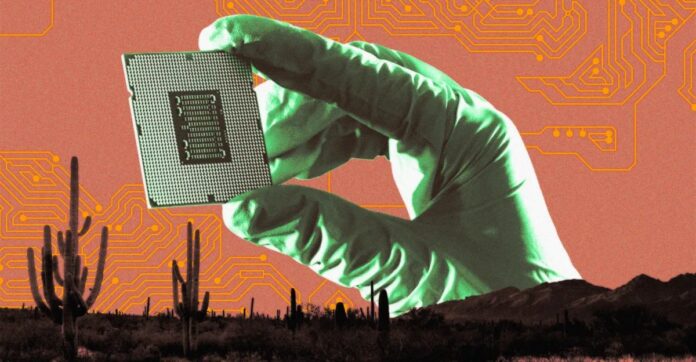Arizona is undergoing a dramatic economic shift, moving beyond its traditional “five C’s” (cotton, cattle, citrus, copper, and climate) towards a new dominant industry: semiconductor manufacturing. The Greater Phoenix area is rapidly becoming a hub for chip factories, with developers already planning residential and industrial zones to accommodate the expected influx of workers. This surge is driven by both national security concerns and the desire to recapture global leadership in the AI arms race.
The Rise of the Sixth “C”
The state’s economic development officials are already framing semiconductors as the sixth pillar of Arizona’s economy, even as older industries like agriculture struggle with dwindling water supplies. Ironically, these same chip factories consume vast amounts of water, raising concerns about sustainability in a desert environment.
The scale of investment is staggering. Arizona has attracted over $200 billion in semiconductor funding in the last five years alone, with major players like Taiwan Semiconductor Manufacturing Company (TSMC) and Intel committing to next-generation chip production. This influx is fueled by the US CHIPS and Science Act, which authorized $52.7 billion in domestic manufacturing subsidies.
The Dark Side of the Boom
While lawmakers and industry leaders promise a manufacturing renaissance, skepticism remains among local residents and workers. The rush to build fabs raises questions about job quality, worker safety, and environmental impacts. Concerns center on whether companies will hire locally, protect residents from chemical exposure, and manage water and energy consumption responsibly.
A counter-conference, “The Dark Side of the Chip,” organized by the coalition Chips Communities United (CCU), highlights these fears. Participants argue that the industry treats workers as “embarrassing and temporary replacements for something they can’t automate yet,” with a reliance on H-1B visas and grueling working conditions mirroring those in Taiwan.
Legacy of Contamination
The history of semiconductor manufacturing is also marked by environmental damage. Silicon Valley remains littered with Superfund sites – toxic areas requiring long-term cleanup. Arizona already has one such site, left behind by Motorola, stretching for seven miles and contaminated with carcinogens like benzene and arsenic. The potential for similar contamination looms as new fabs come online.
The Stakes Are High
The future of US semiconductor manufacturing hinges on Arizona’s success. Lawmakers, industry leaders, and workers face a critical juncture. Can the state balance economic growth with environmental sustainability, worker protections, and community well-being? The outcome will determine whether this new “Silicon Valley” becomes a model for responsible innovation or another cautionary tale.
The race to recapture dominance in chip manufacturing is on, but the true cost of victory remains to be seen.


































